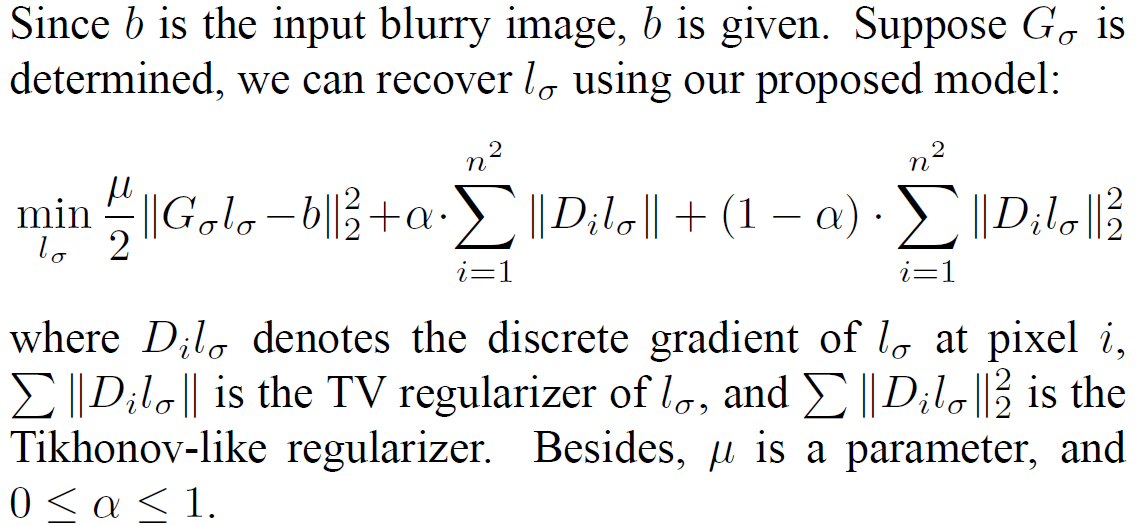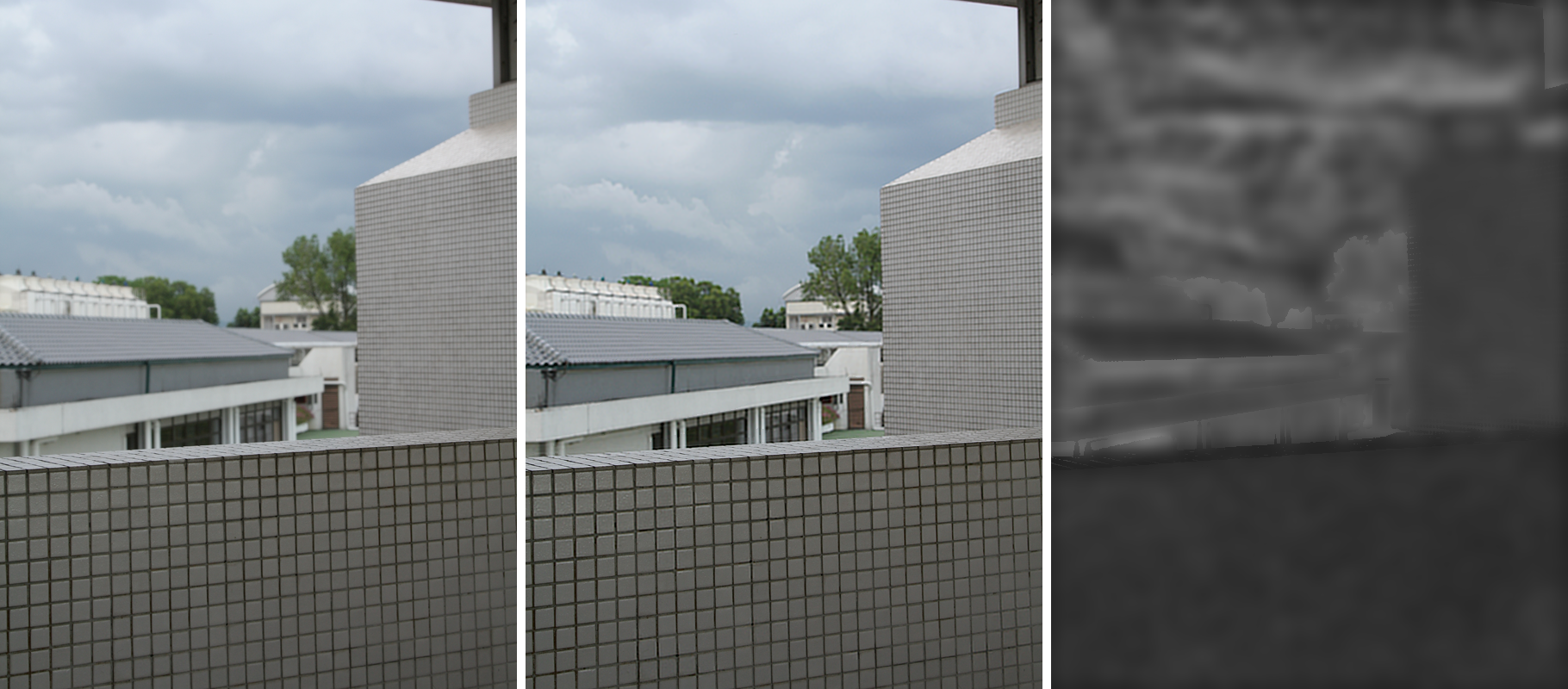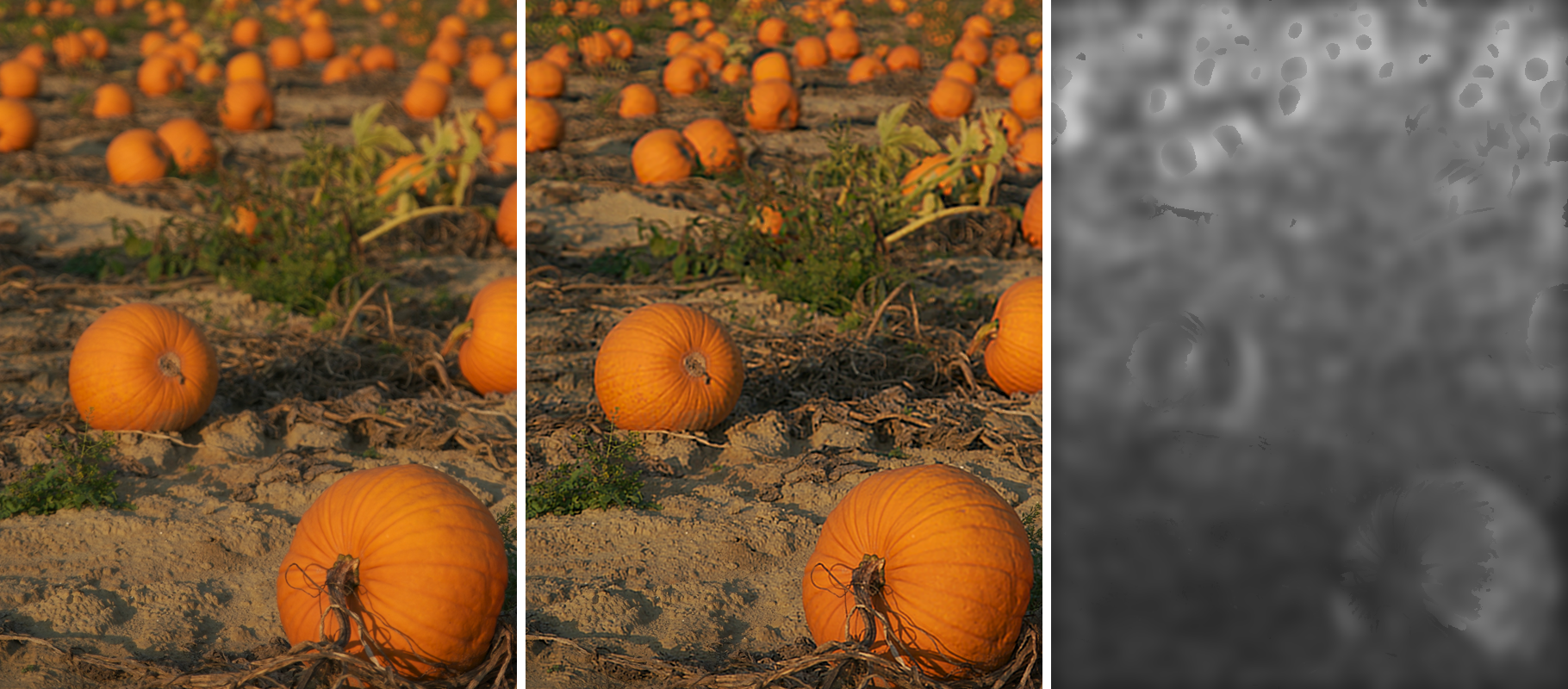
Title
Spatially-Varying Out-of-Focus Image Deblurring with L1-2 Optimization and a Guided Blur Map
Authors
Chih-Tsung Shen, Institute of Information Science, Academia Sinica, Taiwan, R.O.C.
Wen-Liang Hwang, Institute of Information Science, Academia Sinica, Taiwan, R.O.C.
Soo-Chang Pei, Department of Electrical Engineering, National Taiwan University, R.O.C.
Abstract
In this work, we propose a spatially-varying deblurring
method to remove the out-of-focus blur. Our proposed
method mainly contains three parts: blur map generation,
image deblurring, and scale selection. First, we derive a blur
map using local contrast prior and the guided filter. Second,
we propose our image deblurring method with L1-2 optimization
to obtain a better image quality. Finally, we adopt
the scale selection to ensure our output free from ringing
artifacts. The experimental results demonstrate our proposed
method is promising.
L1-2 Deblurring

Download
[Matlab Code]
Our code is only for generating the results. Please refer to [2] to find the corresponding notations of matrices:
Using our code, please also cite these two papers:
[1] K. He, J. Sun, and X. Tang, ¡§Guided image filtering,¡¨ in ECCV, 2010, pp. 1¡V14.
[2] Y.Wang,W. Yin J. Yang, and Y. Zhan, ¡§A new alternating minimization algorithm for total variation image reconstruction,¡¨
SIAM Journal on Imaging Sciences, vol. 1(3), pp. 248¡V272, 2008.
Experimental Results (Blurry Input, Ours, Blur Map)

The data is downloaded from Zhuo et al's webpage.
Please notice the regions within different depth.

The data is downloaded from Zhuo et al's webpage.
We remove the out-of-focus while extend the depth-of-field.

The data is captured using Camera Control Pro 2 with a tripod.
Since two men stand at the different depth, the input image suffers spatially-varying out-of-focus blur.
As we can see, we reconstruct the blurry faces.

The data is captured using Camera Control Pro 2 with a tripod and focus on the ball.
Since two men stand at the different depth, the input image suffers spatially-varying out-of-focus blur.
As we can see, we reconstruct the blurry faces while keep the ball latent.

The data is captured using a camera phone, and it is out-of-focus.
We remove the blur while enhance the chinese characters and texture parts.

The data is captured using a camera phone, and it is out-of-focus.
We remove the blur while enhance the lady's face and texture parts.
The lady is a Traditional Chinese Doctor. She is observing the patient's movement.

The data is captured using a digital still camera(DSC), and it is out-of-focus.
We remove the blur in the background while enhance the lady's face and texture parts.

The data is part of the image captured using a DSLR, and it is out-of-focus.
We remove the blur in the background while keep the hair latent.
More Comparisons

The data is downloaded from Xu et al.'s webpage.
Although the data suffers from motion-blur, our method still gives a certain result and extends the depth of field.
Since our method is not for depth estimation, we set the smooth regions as in-focus regions so as to suppress the ringing artifacts.

The data is downloaded from Xu et al.'s webpage.
Although the data suffers from motion-blur, our method still gives a certain result and extends the depth of field.

The data is downloaded from Xu et al.'s webpage.
Although the data suffers from motion-blur, our method still gives a certain result and extends the depth of field.
Since our method is not for depth estimation, we set the smooth regions as in-focus regions so as to suppress the ringing artifacts.

The data is downloaded from Xu et al.'s webpage.
Although the data suffers from motion-blur, our method still gives a certain result and extends the depth of field.













